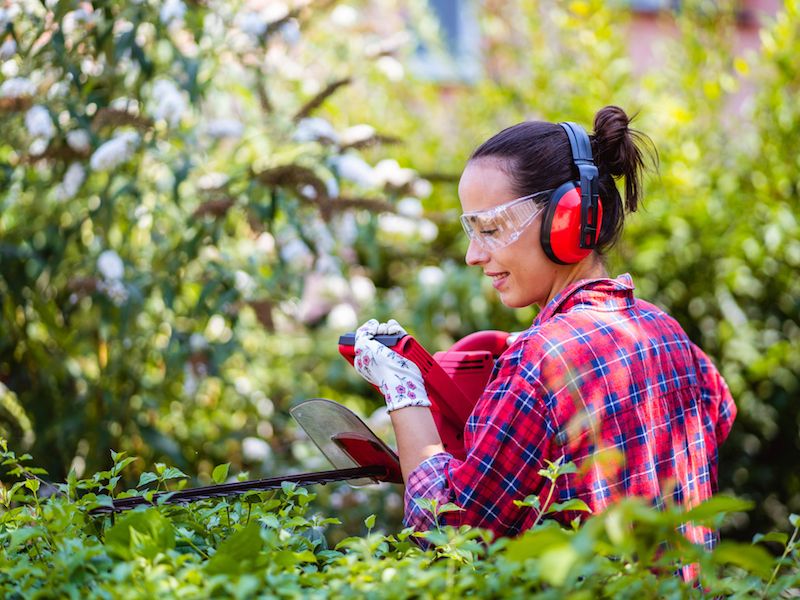
Protecting your hearing is much like eating right. It sounds smart, but not many of us have a good idea of where to start. If there aren’t any apparent noise risks and you don’t consider your daily environment to be very loud, this is especially true. But everyday life can stress your ears and your senses, so practicing these hearing protection techniques can help preserve your auditory acuity.
If you want to keep enjoying the sounds around you, you need to do everything you can to slow down the deterioration of your hearing.
Tip 1: Hearing Protection You Can Wear
The most simple and practical way that you can safeguard your ears is to protect your ears. This means taking basic steps to diminish the amount of loud and harmful noises you’re exposed to.
For many people, this will mean wearing hearing protection when it’s warranted. Hearing protection generally comes in two basic forms:
- Ear Muffs, which are placed over the ears.
- Ear Plugs, which are placed in the ear canal.
Neither form of hearing protection is inherently better than the other. Each style has its benefits. What’s significant is that you pick some hearing protection that you feel comfortable wearing.
Tip 2: Be Aware When Sound Gets Dangerous
But when to wear hearing protection is the question. We’re used to connecting dangerous noise with painful noise. But the truth is that sounds can begin to damage your ears at a much lower volume than you might expect. The sounds of traffic, for instance, are loud enough to begin injuring your hearing after only a couple of hours. An essential step in protecting your hearing, then, is knowing when sound becomes harmful.
Usually sounds become dangerous at the following thresholds:
- 85 decibels (dB): After around two hours this volume of sound is harmful.This is the volume of sound you’d expect from a busy city street or your hairdryer.
- Over 100 dB: This is where you can injure your hearing very quickly. Anything over this limit can injure your hearing in minutes or seconds. For instance, rock concerts and jet engines will injure your ears in 30 seconds.
- 95-100 dB: This is the typical volume of your earbuds or the level of farm equipment. After about 15-20 minutes this level of noise becomes hazardous.
Tip 3: Make Your Phone Into a Sound Meter
Now that we have a general understanding of what levels of noise could be dangerous, we can take some steps to ensure we limit our exposure. The trick is that, once you’re out in the real world, it can be hard to determine what’s too loud and what isn’t.
That’s where your smartphone can become a handy little tool. There are dozens of apps for iPhone, Android, and everything in between that turn your device’s microphone into a sound meter.
In order to get an idea of what dangerous levels of noise really sound like, use your sound meter to check the decibel level of everything you are hearing.
Tip 4: Be Mindful of Your Volume Buttons
A smartphone with earbuds is commonly the way people listen to music nowadays. Your hearing is put at risk with this setup. Over years of use, earbuds set to a substantially high level can cause significant damage to your hearing.
That’s why safeguarding your ears means keeping a focused eye on your volume management. In order to drown out sounds elsewhere, you should never raise the volume. in order to make sure that volume doesn’t get too high, we suggest using volume configurations or app settings.
If your hearing begins to decline, earbuds can become a negative feedback loop; in order to make up for your declining hearing, you could find yourself constantly rising the volume of your earbuds, doing more damage to your ears in the process.
Tip 5: Get Your Hearing Examined
You may think that getting a hearing test is something you do only when your hearing begins to decline. Without a baseline to compare results to, it’s not always easy to detect a problem in your hearing.
Scheduling a hearing screening or exam is a great way to obtain data that can be used for both treatment and diagnostic purposes, ensuring that all of your future hearing (and hearing protection) decisions have a little bit of added context and information.
Pay Attention to Your Hearing
It would be ideal if you could always safeguard your ears without any hassles. But there will always be challenges. So safeguard your ears whenever you can, as often as possible. Also, get routine hearing exams. Hopefully, these guidelines will give you a good start.